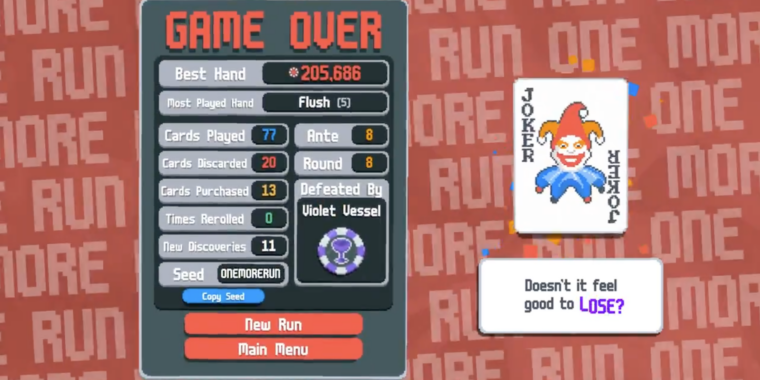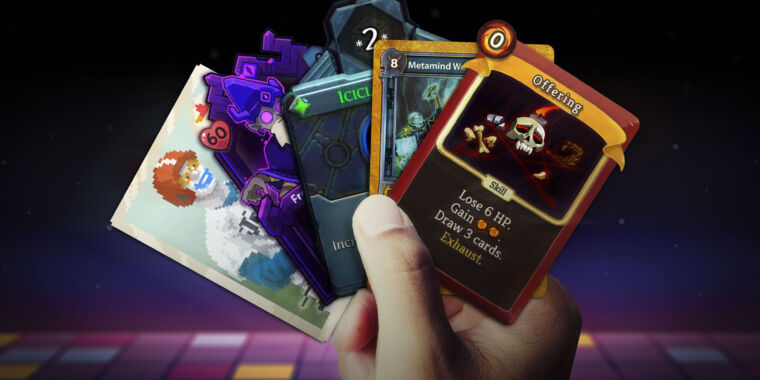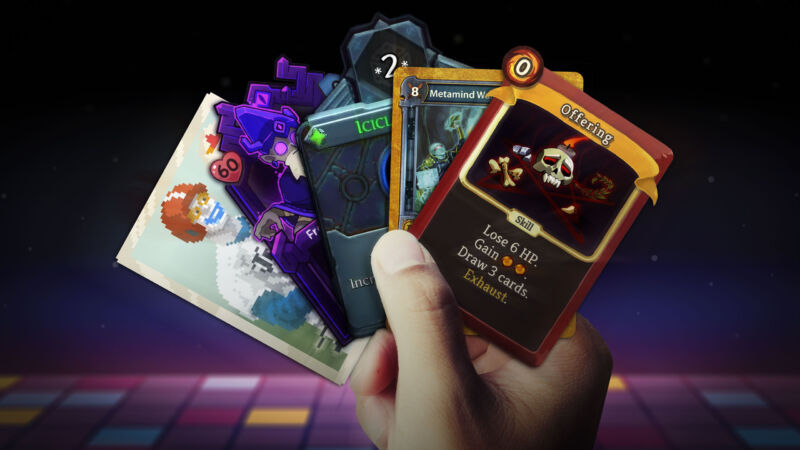Balatro arrives on phones Sept. 26, so plan your “sick” days accordingly
The joker is on you —
It has already sold 2 million copies. Now the fun gets even more multiplied.
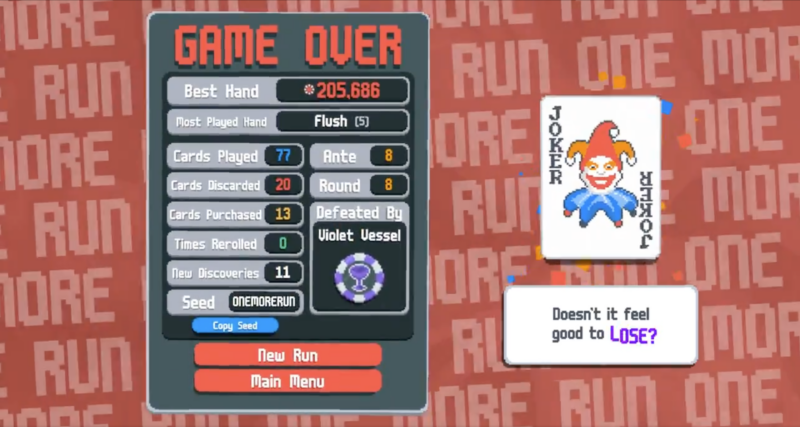
LocalThunk, the pseudonymous lead developer of the surprise smash hit deckbuilding/roguelike/poker-math-simulation game Balatro, has long given the impression that he understands that his game, having sold 2 million copies, might be a little too good.
To that end, LocalThunk has made the game specifically not about actual gambling, or microtransactions, or anything of the kind. Shortly after it arrived in February 2024 (but after it already got its hooks into one of us), some storefronts removed or re-rated the game on concerns about its cards and chips themes, causing him to explain his line between random number generation (RNG), risk/reward mechanics, and actual gambling. He literally wrote it into his will that the game cannot be used in any kind of gambling or casino property.
So LocalThunk has done everything he can to ensure Balatro won’t waste people’s money. Time, though? If you’re a Balatro fan already, or more of a mobile gamer than a console or computer player, your time is in danger.
Balatro is coming to iOS, both in the Apple Arcade subscription and as a stand-alone title, and the Google Play Store on September 26. The pitch-perfect reveal trailer slowly ratchets up the procrastinatory terror, with the word “MOBILE” punctuating scenes of gameplay, traditional businessmen crying, “Jimbo Stonks” rising upward (Jimbo being the moniker of Balatro’s joker), and a world laid to waste by people chasing ever-more-elusive joker combos.
Please note in the trailer, at the 36-second mark, the “Trailer Ideas” for Balatro on Mobile, including “Announcing Balatro is now a Soulslike,” “Romanceable Jimbo Reveal,” and “It’s like that apocalypse movie with the meteor but instead Jimbo is in the sky.”
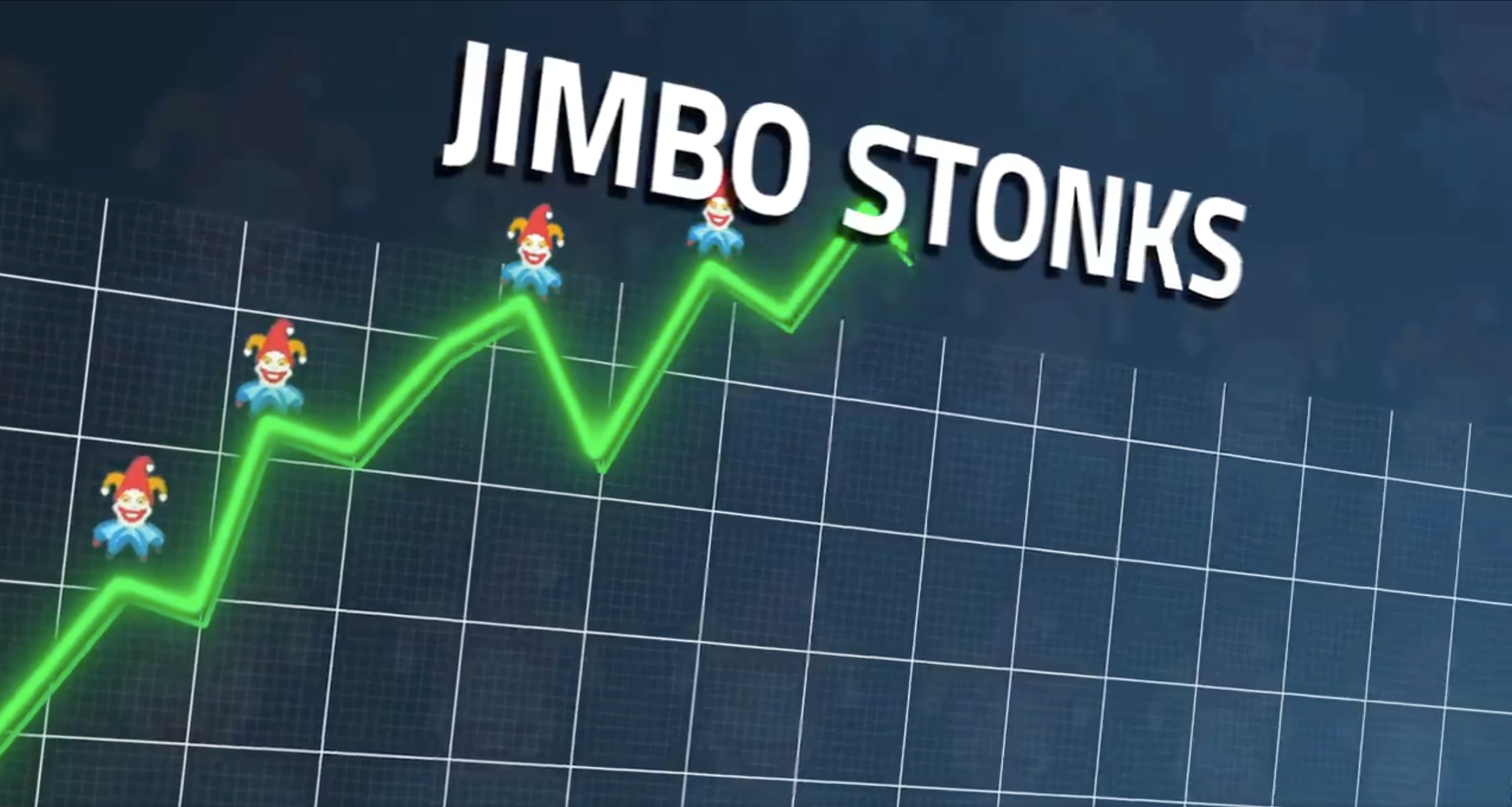
Playstack
Even more Balatro content is coming
The mobile version of Balatro is one of three updates LocalThunk has planned for 2025. A gameplay update is still due to arrive sometime this year, one that will be completely free for game owners. It won’t feel like a different game, or even a 1.5 version, LocalThunk told Polygon last month, but “extending that vision to, I think, its logical bounds instead of shifting directions … [M]ore about filling out the design space that currently exists, and then extending that design space in interesting directions that I think people are going to love.”
What else is coming? Perhaps “Friends of Jimbo,” teased today on Balatro’s X (formerly Twitter) account, tells us something. Notably, LocalThunk says that he developed the mobile ports himself.
As we noted in our attempt to explain the ongoing popularity of roguelike deckbuilders, Balatro is LocalThunk’s first properly released game. He claims to have not played any such games before making Balatro but was fascinated by streams of Luck Be a Landlord, a game about “using a slot machine to earn rent money and defeat capitalism.” That game, plus influences of Cantonese game Big Two and the basics of poker (another game LocalThunk says he didn’t actually play), brought about the time-melting game as we know it.
Balatro, in turn, took off with streamers, who would break the game with seeds, hit scores of 30 quintillion, or just keep coming back with everything they’ve learned.
A number of Ars writers have kept coming back to Balatro, time and again, since its release. It’s such a compelling game, especially for its indie-scale price, that none of us could really think of a way to write a stand-alone “review” of it. With its imminent arrival on iPhones, iPads, and Android devices, we’re due to re-educate ourselves on how much time is really in each day and which kinds of achievements our families and communities need to see from us.
Maybe the game won’t sync across platforms, and the impedance of having to start all over will be enough to prevent notable devolution. Maybe.
Balatro arrives on phones Sept. 26, so plan your “sick” days accordingly Read More »
